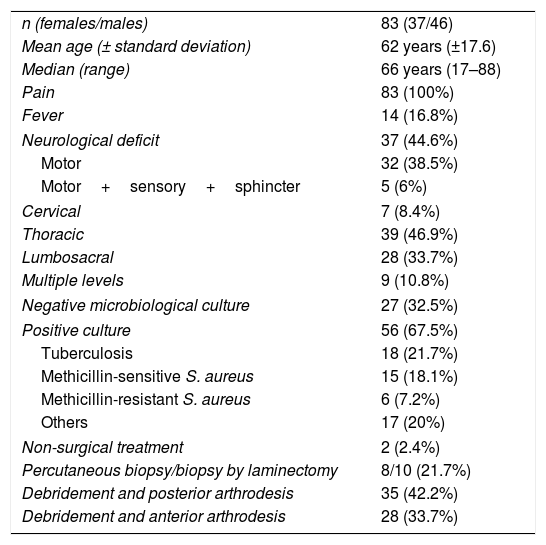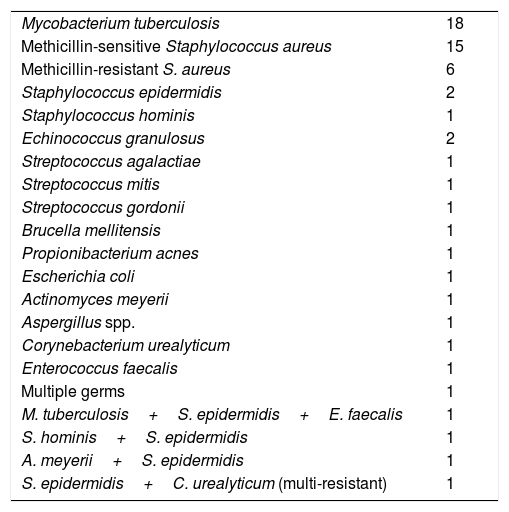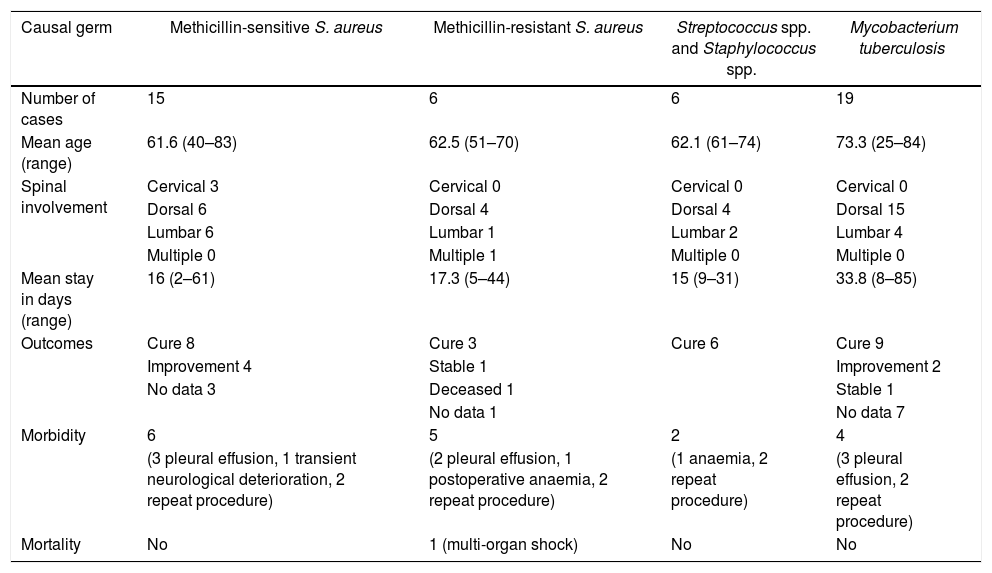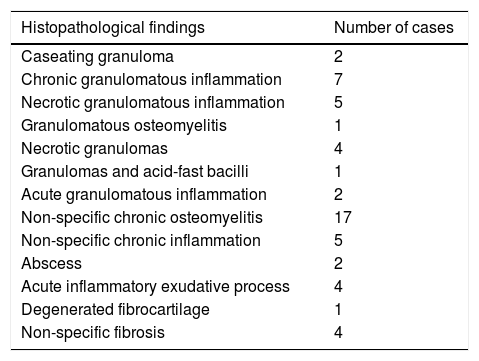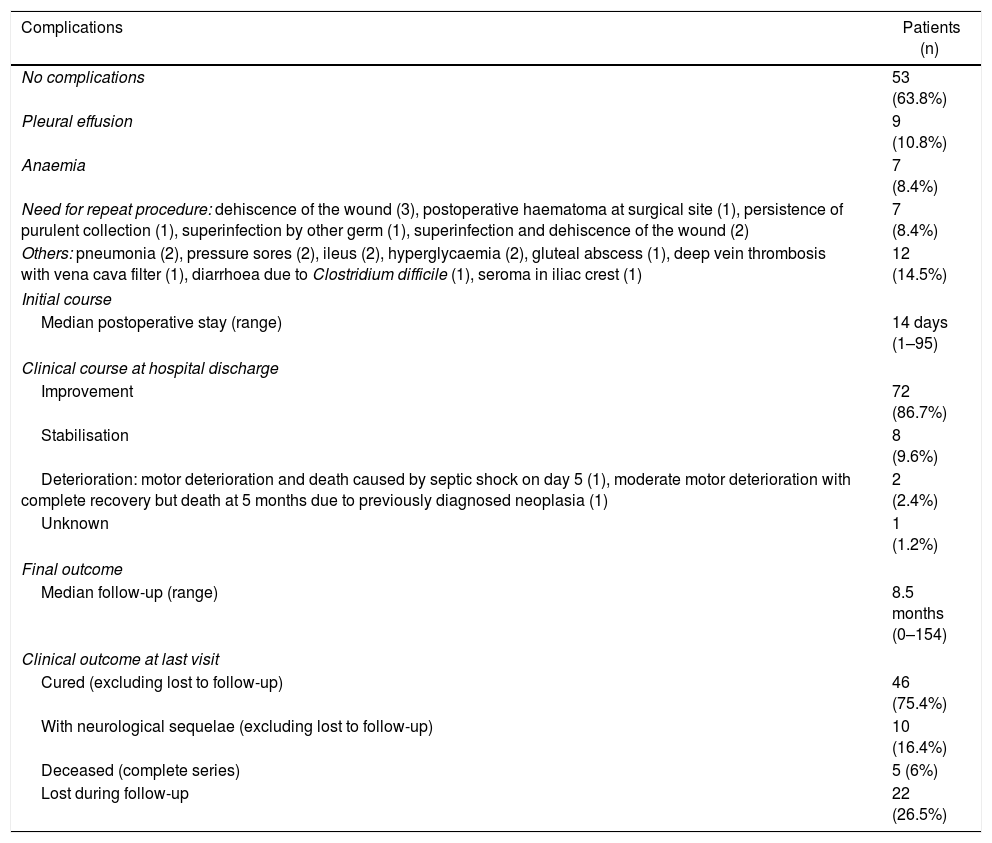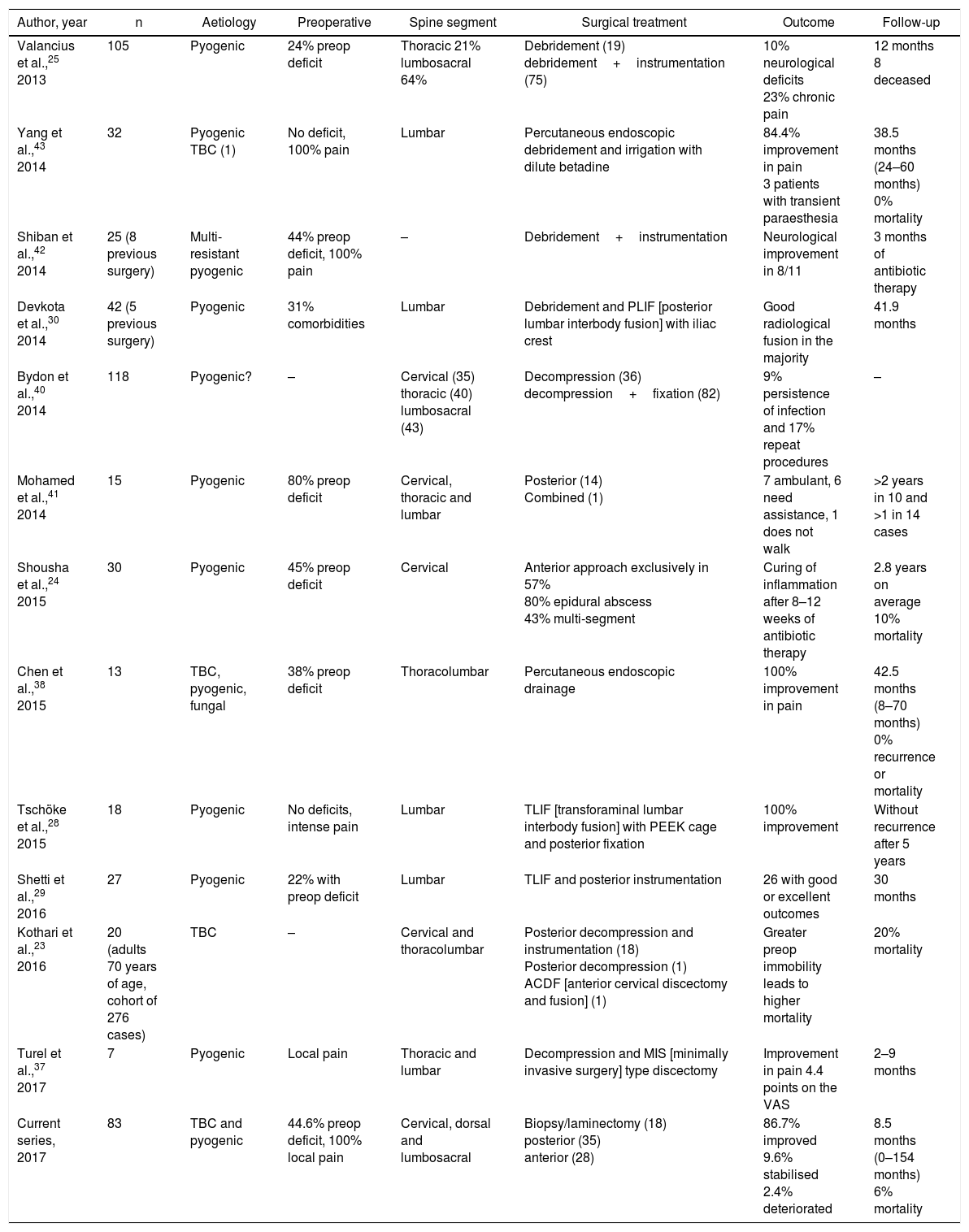To describe and discuss the role of surgery in the management of spontaneous spondylodiscitis.
Patients and methodsRetrospective review on the outcome and complications of a cohort of patients undergoing surgery for spontaneous (non-postoperative) spondylodiscitis of any spinal level or aetiology.
ResultsFrom 1995 to 2014, 83 patients (45% females, median age 66) with spondylodiscitis were treated. Microbiological confirmation was obtained in 67.4%. Forty-four percent of patients presented with neurological defect. The most common affected level was thoracic (54.2%). The most frequent isolations were Mycobacterium tuberculosis (229%), Staphylococcus aureus (20.5%) and MRSA (7.2%). Eighty-one patients underwent surgery: simple laminectomy and/or biopsy (22.2%), debridement and posterior fixation (43.2%) and debridement and anterior fixation (34.5%). Improvement of pain or neurological defect was achieved in 86.7% of the patients; 7 patients stabilised and 2 worsened. Complications occurred in 35 patients, mainly pleural effusion (9), anaemia (7) and need for re-debridement (7). Median postoperative stay was 14days. After a median follow up of 8.5 months, 46 patients were considered completely cured, 10 presented sequelae, 22 patients were lost and 5 patients died. No readmissions occurred because of the infectious episode.
ConclusionsAlthough prolonged and specific antibiotic therapy remains the mainstay of treatment in spontaneous spondylodiscitis, surgery provides samples for microbiological confirmation and histopathologic study, allows debridement of the infectious foci and stabilises the spine. In our experience, the use of internal metallic fixation material accelerates recovery and does not predispose to chronic infection.
Describir y discutir el papel del tratamiento quirúrgico en la espondilodiscitis espontánea.
Pacientes y métodosAnálisis retrospectivo de resultados y complicaciones de una cohorte de pacientes intervenidos por espondilodiscitis espontánea (no posquirúrgica) de cualquier nivel espinal y etiología.
ResultadosEn el período 1995-2014 se trataron 83 pacientes (45% mujeres, edad mediana 66años) con diagnóstico de espondilodiscitis (confirmación microbiológica en el 67,4%). Existió déficit neurológico preoperatorio en el 44,5%. El nivel más frecuentemente afectado fue el dorsal (54,2%). Los principales gérmenes aislados fueron Mycobacterium tuberculosis (22,9%), Staphylococcus aureus (20,5%) y SARM (7,2%). Se intervinieron 81 pacientes mediante: laminectomía simple y/o biopsia (22,2%), laminectomía, desbridamiento y artrodesis posterior (43,2%), y desbridamiento y fijación anterior (34,5%). El 86,7% de los pacientes intervenidos obtuvieron buena evolución postoperatoria (mejoría sintomática o del déficit). Se estabilizaron 7 pacientes y empeoraron 2. Aparecieron complicaciones en 35 pacientes, fundamentalmente derrame pleural (9), anaemia (7) y necesidad de reintervención y desbridamiento (7). La mediana de estancia postoperatoria fue de 14días. Tras un seguimiento medio de 8,5 meses se consideraron curados 46 pacientes, 10 presentaron secuelas, se perdieron 22 pacientes y 5 fallecieron. La cirugía no motivó reingresos.
ConclusionesAunque la antibioterapia específica y prolongada es el tratamiento estándar, la cirugía permite obtener muestra para estudio microbiológico e histopatológico, desbridar el foco infeccioso y estabilizar la columna. En nuestra experiencia la utilización de material metálico de fijación acelera la recuperación y no predispone a ulteriores infecciones o a cronificación de las mismas.
Article

If it is the first time you have accessed you can obtain your credentials by contacting Elsevier Spain in suscripciones@elsevier.com or by calling our Customer Service at902 88 87 40 if you are calling from Spain or at +34 932 418 800 (from 9 to 18h., GMT + 1) if you are calling outside of Spain.
If you already have your login data, please click here .
If you have forgotten your password you can you can recover it by clicking here and selecting the option ¿I have forgotten my password¿.










